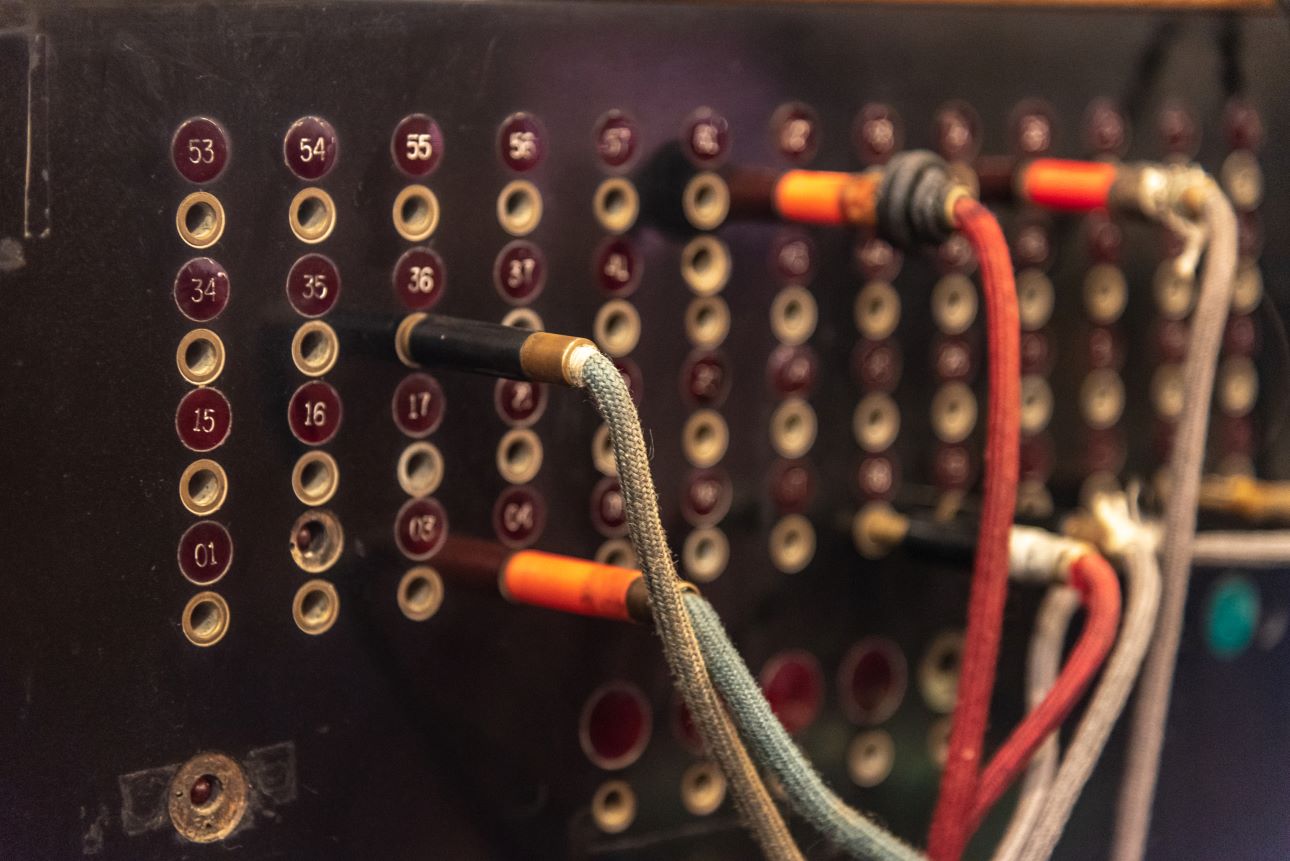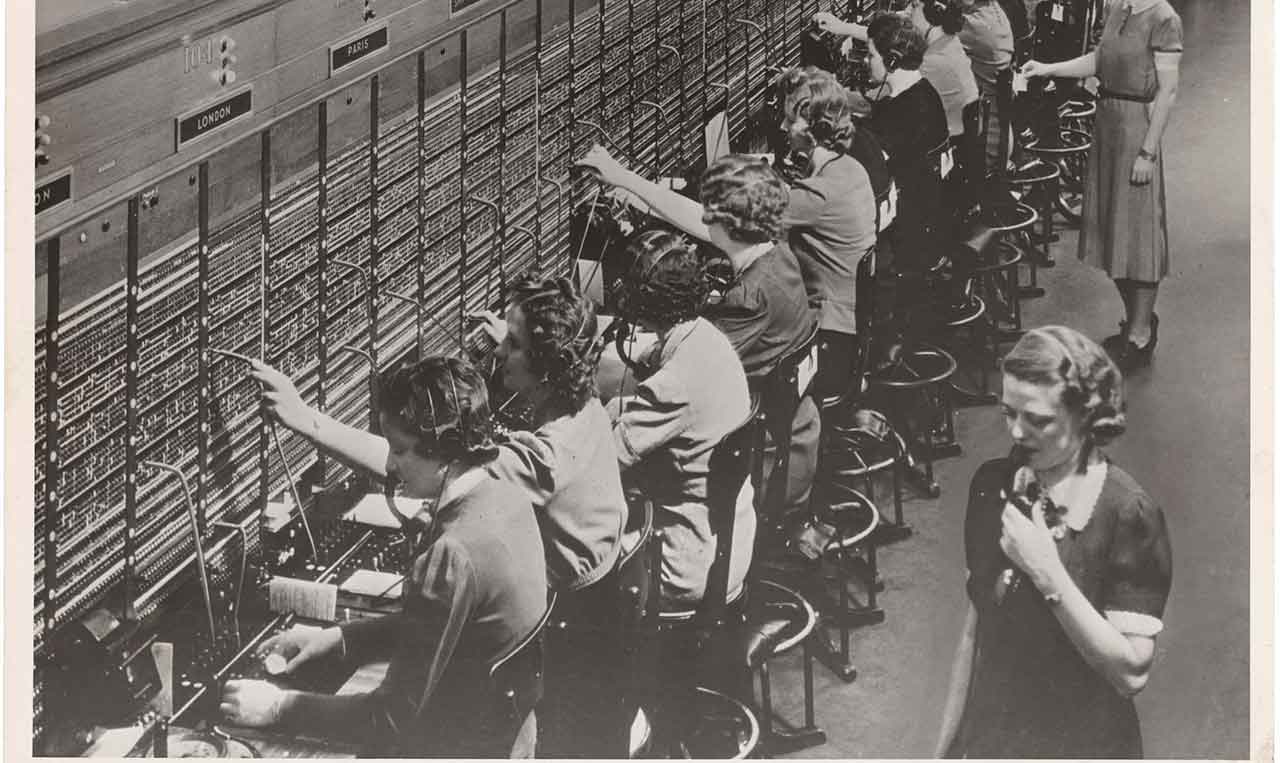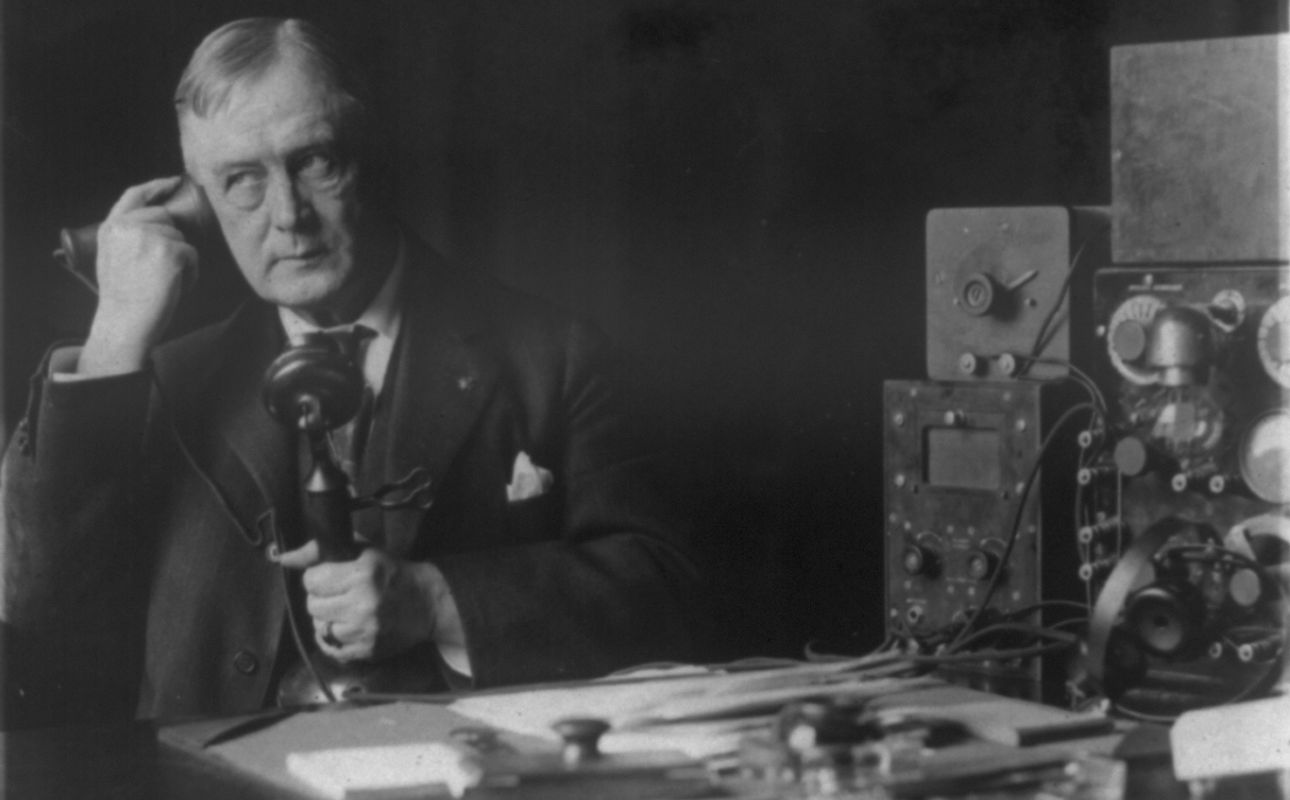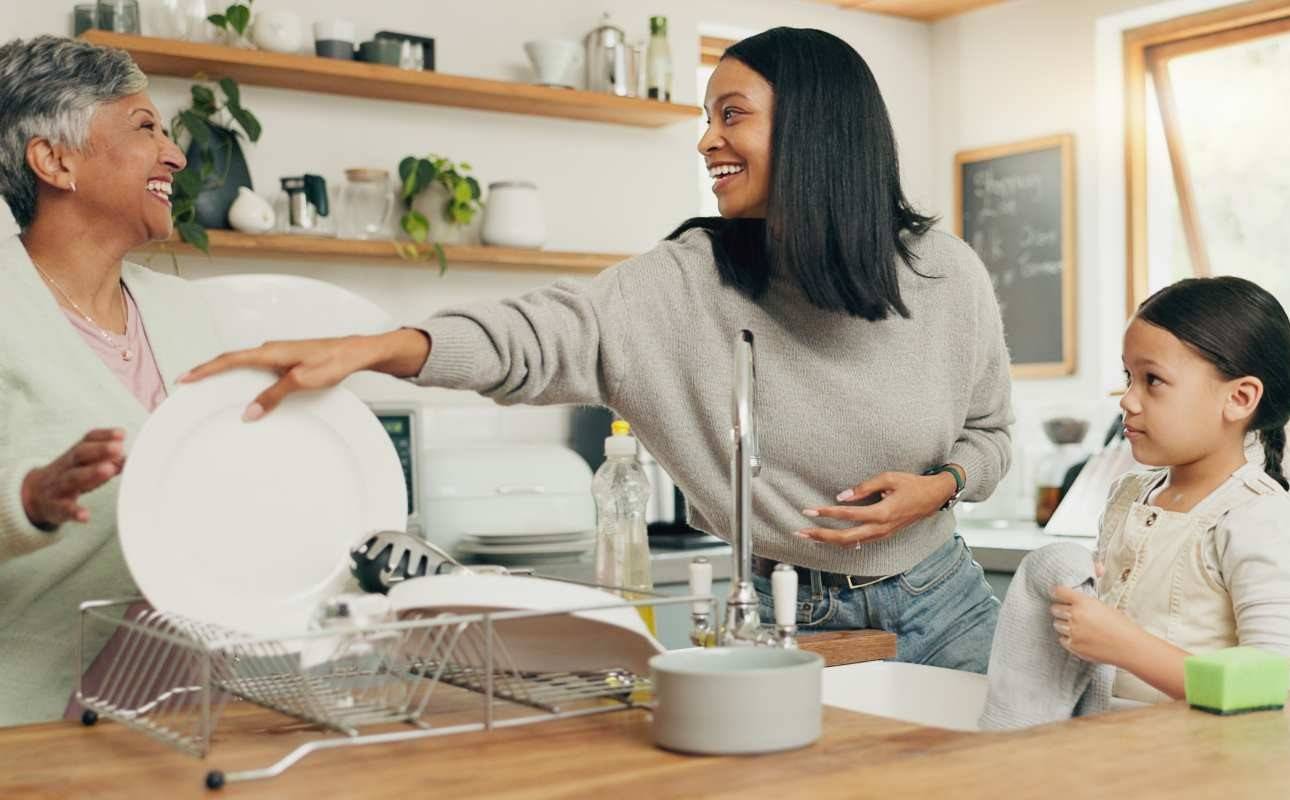When did area codes become a thing?

We use phone numbers every day, and we’re well accustomed to dialing area codes. In fact, we’re so used to them that area codes have become part of our identity, and you may even be able to recognize where someone hails from based on their area code alone.
While it’s easy to feel like area codes have been a thing forever, they’ve only been around since the 1940s. We get it, thinking about area codes can unleash a number of shower thoughts. How many area codes are there? How are area codes determined? Does the world end when we run out of area codes? We’ve got your answers. Welcome to the wild, crazy world of area codes (we’re not joking, those three digits have a complicated history). Let’s get started.
Calling chaos

It’s easier than ever to call anyone in the world, but that wasn’t the case when the telephone was first invented in 1876. Telephone networks were local affairs, bubbling up to serve communities all across North America.
Each community had its own telephone network, and its own local administrator to manage it all and assign phone numbers. As telephones grew more popular and populations increased, more numbers needed to be added. So the local administrator would draw up its own numbering plan to fill local needs.
This worked well for a time, but it made calling long distances an absolute headache. Each network would have its own numbering system. Some places had four-digit numbers, while others had five. Some even had letters; remember Murray Hill 5-9975 in episodes of “I Love Lucy”? That’s how numbers looked! This made long-distance calling inefficient and difficult.
This was becoming a larger problem in the 1940s, so the Bell System decided to find a way to unify the local numbering plans and develop a nationwide system to make long-distance calling more efficient. In 1947, AT&T published its nationwide numbering plan, created in partnership with independent telephone operators.
The North American Numbering Plan
You may have seen or heard telephone operators in old movies, TV shows and ads. That’s how long-distance phone calls worked. You would place a call, and then a telephone operator would have to switch your call from the local network to a long-distance line, called a Long Line, and then switch it back to the local network where the callee resided.
This was a lot, and the long-term goal of the North American Numbering Plan was to get rid of all of it. Instead of having operators switch out lines, the call would dial direct from the area it was initiated. But first everyone in the country would have to use the same number format. This would also allow for automated call switching, getting rid of operators entirely.
The North American Numbering Plan carved up North America into 86 regions known as Numbering Plan Areas (NPAs). While the United States and Canada were the two primary areas in the plan, Mexico and parts of the Caribbean islands were also included. However, Mexico eventually left the plan.
Each area was determined largely by the already established jurisdictions of states or, in Canada, provinces. Why? Well, it was easier for people because they already understood the geographical differences of states and provinces. Plus, it was just cheaper to do it that way. Some states and provinces, however, needed to be further carved up because of size.
Each NPA was assigned a three-digit code. Originally referred to as the Numbering Plan Area Code, it has since casually become known as the area code. If you were in the same NPA as another number, you didn’t have to dial the area code. But if you were calling another NPA, you did.
Within each NPA were a number of telephone exchanges. These exchanges were called central offices and were used to route calls. Each central office was also assigned three-digits. If you’re keeping score, this is where the first three digits of your seven-digit phone number come from.
Now we can start piecing together how a phone number works:
The country code is first, which is 1 for the U.S. and Canada and two digits for other countries.
The area code, the first three digits of a 10-digit number, routes the call to a geographic area.
The next three digits, the central office code, route the call to a certain telephone switch within that area.
The final four digits, called a station code, route the call to a specific subscriber or line.
It’s worth noting that for international calling you must place a +, the country’s calling code and then the phone number.
Fun fact: In the central office code 555, the station code digits between 0100 and 0199 are actually reserved for fictional use. So if you ever see the number (408) 555 0134 in a movie or TV show you’ll know it’s fake.
Call it a numbers game
In 1947, AT&T finished the design for the North American Numbering Plan. There were originally 152 area codes, each one with enough capacity for 540 central offices. However, only 86 area codes were actually assigned—with New Jersey receiving the first one, 201. The second area code, 202, was assigned to the District of Columbia.
Area codes aren’t just assigned willy nilly either. There’s a method to this madness. The numbering plan format is very specific. The first digit in an area code has to be a number between 2 and 9. The same goes for the first digit in a central office code. Go ahead, check your own number, check your friends’ numbers, you’ll find that no area codes or central office codes start with 1 or 0.
Why? 0 was used for operator assistance and 1 was automatically ignored by switching equipment at the time. Of course, later on 1 became the Country Code for both Canada and the United States.
There were further complications though. For a time, states with multiple area codes had a 1 as the middle digit. For example, 415 is one of the original area codes and covers San Francisco. The 1 shows that it’s in a state with multiple area codes. If an area code had a 0 as the second digit, it showed the state had a unified area code.
This rule was quickly broken in the 1950s as more area codes were needed. As we’ll see, more numbering plan rules were quickly broken as telephones became more popular and the population grew. In the 1960s, it became clear that cities like Los Angeles and New York would run out of central office codes by the early 1970s. So another rule was broken: Central office codes could have a second digit other than 0 or 1.
At the same time, areas with multiple area codes started requiring dialing 1 before calling a phone number. Yes, this is why sometimes you have to dial 1 before calling someone, although this is now less common thanks to VoIP services like Ooma and mobile phone features like Apple’s Dial Assist, both of which handle these things for you.
There is another type of code you should know about. We all recognize numbers like 911, 411, 800, 888 and more recently, 988. These numbers were designed to be easily recognizable and subscribe to a format. The second and third digits must be the same. Simple and effective!
Dial G for Growing Pains

In the 1990s and 2000s there was a communication revolution. Fax machines, internet modems, and mobile phones started booming, which led to an increased need for phone numbers. Many area codes were about to be capped off and exhausted.
The decision was made to add new area codes by two means: splits and overlays. Splits would carve up a numbering plan area into two or more areas. One of the areas would keep the old area code and the new areas would get a brand new shiny one. An overlay is the opposite, multiple area codes would serve the same area.
During this time period, area codes received a rule change. The second digit in the area code, previously only 0 or 1, could now be any number from 0 to 8. This mimics a change central office codes experienced in the 70s, but with one twist. The second digit 9 was reserved as an emergency option and for future expansion should it be needed. The first new area codes to break the rule were 334 in Alabama and 360 in Washington, which went live on January 15, 1995. In the same year, a lot of cities in both the United States and Canada started using multiple area codes.
This growth meant another change was on the way. All those cities with multiple area codes meant the way you could call within a city had to change. Atlanta was the first city to require 10-digit dialing for inter-city calls in 1996.
The future is calling
Smartphones are everywhere, and some people even have multiple smartphones. Original area codes like 415 are exhausted, and you may call up your phone service provider and find out they just don’t offer numbers in certain area codes anymore.
So what’s going to happen when we eventually run out of area codes? There are currently a total of 335 area codes, with 18 of them being non-geographic. An analysis of the North American Numbering Plan estimates that the current structure is good until around 2049. After that, some changes are going to be needed.
There are a number of plans being discussed, but no clear consensus on which one will win. One plan would add either a 0 or 1 to the beginning or end of an area code or the seven-digit number. Another option is to add 9 as the second digit of existing area codes. So the 650 area code for San Mateo County, California, would become 6950.
We’ll have to wait to find out which plan is adopted. But it looks like the era of 10-digit phone numbers may see its end in the next two decades. What won’t change? That the area code is a dynamic and essential part of how we communicate, and we haven’t seen the last of it yet.



